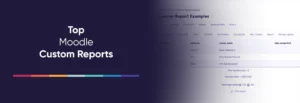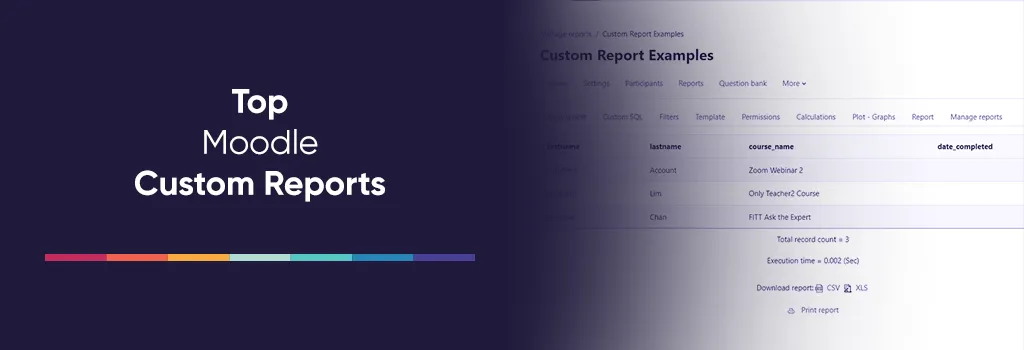Creating custom Moodle dashboards is essential for tracking student progress, course completions, and learner engagement in your Moodle LMS. The good news is you can build them without coding skills or SQL knowledge, making it easier than ever to gain actionable insights.
The good news? You don’t need coding skills or SQL knowledge to create powerful, custom Moodle dashboards that give you the insights you need for RTOs, schools, and online training platforms.
Why Custom Moodle Dashboards Are Essential for Moodle LMS

A well-designed Moodle dashboard helps you:
-
Track student progress across courses
-
Identify at-risk learners before they fall behind
-
Monitor course completions and compliance
-
Generate actionable reports for trainers and administrators
Without a custom Moodle dashboard, you may waste hours navigating menus or exporting data manually.
Step 1: Choose the Best Moodle Dashboard Plugin
You don’t need SQL to create a dashboard. Two beginner-friendly Moodle reporting plugins are:
-
Configurable Reports – create detailed reports without coding.
-
Custom Reports – provides templates for advanced reporting, still accessible to non-technical users.
Step 2: Identify Key Metrics for Your Moodle LMS Dashboard
Before building your dashboard, define which Moodle analytics metrics matter most:
-
Course completion rates
-
Student login activity
-
Quiz and assignment performance
-
Trainer engagement and course feedback
Focusing on high-priority Moodle data reporting ensures your dashboard is actionable, not cluttered.
Step 3: Add Blocks and Widgets for Visual Dashboard Insights
Enhance your Moodle dashboard with interactive blocks and widgets:
-
Activity completion blocks – show learner progress visually
-
Quiz result blocks – display scores and performance trends
-
Upcoming deadlines blocks – keep students on track
Step 4: Automate Reports for Efficiency
Automation makes your dashboard more powerful:
-
Schedule weekly Moodle performance reports for trainers or students
-
Send automatic email reminders for pending assignments
-
Export Moodle analytics data as CSV for audits or management
Step 5: Test, Refine, and Optimise Your Moodle Dashboard
After setting up your dashboard, collect feedback:
-
Are trainers and students finding it useful?
-
Is the data accurate and actionable?
-
Can metrics be adjusted for better insights?
Optimising your dashboard ensures it delivers real value for your LMS.
Why Choose a Moodle Expert for Dashboard Setup
Even without coding skills, creating a custom Moodle dashboard can take time. At Tech Learning, we specialise in:
-
Custom Moodle reporting and dashboards
-
Installing and configuring Configurable Reports plugin
-
Automating Moodle analytics and compliance tracking
-
Enhancing student engagement with visual dashboards
Book a free consultation today and get a Moodle dashboard that works — no coding required.
📞 [Contact Us]
📧 support@techlearning.com.au
🌐 www.techlearning.com.au/contact


